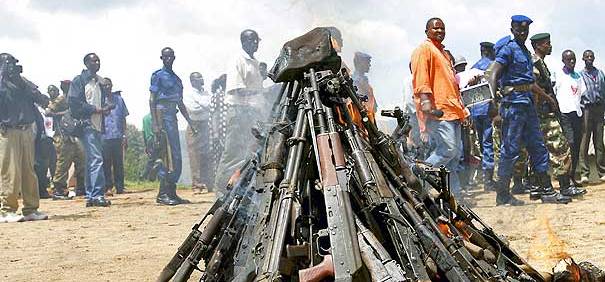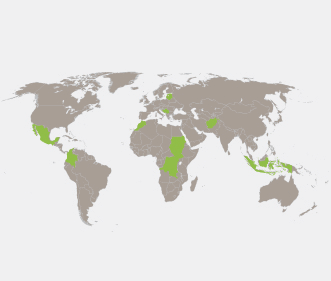Over the last 25 years Disarmament, Demobilization & Reintegration (DDR) has been utilized as a post-conflict tool in over 60 peacekeeping and peacebuilding efforts globally. Supporting efforts ranging from post Cold War statebuilding in southern Africa and Central America, to nation building across Asia, Europe and Africa, DDR remains integral in linking security and development issues in countries recovering from armed conflict. Today DDR is undergoing a significant shift. Initiatives across the Middle East, Asia and the Sahel are calling for DDR during protracted conflict. The advent of interim stabilization measures (ISMs), the inclusion of mercenary groups, and those associated with terrorism and the introduction of countering violent extremism (CVE) permeate this new DDR landscape.
The reading list I have chosen below provides a sound foundation cross-referencing the fundamentals of DDR and the emerging CVE environment. As this is a ‘new frontier’ in the DDR landscape, these provide an instructive policy orientation for these interested in the dynamics of contemporary DDR. (Note: This reading list also complements the publication and launch of a new edited volume this month, UN DDR in an Era of Violent Extremism: Is It Fit for Purpose?)
- Colletta, N., et al. (2008). Interim Stabilization: Balancing Security and Development in Post-Conflict Peacebuilding.
An interim stabilization measure is defined as “measures that MAY be used to keep former combatants’ cohesiveness intact within a military or civilian structure, creating space for a political dialogue and the formation of an environment conducive to social and economic reintegration. ISMs have the potential for considerable strategic and tactical importance in DDR where issues of cantonment, political negotiation, detention and community absorption capacity are needed to create enabling consideration for DDR.
- Department of Peacekeeping Operations [DPKO], (January 2010). McCandless, E. Second Generation Disarmament, Demobilization and Reintegration (DDR) in Peace Operations.
Commissioned by DPKO’s Office of Rule of Law and Security Institutions, the report was a response to a need to have a more development-based approach DDR and reintegration specifically. The report outlines a menu of program options that can facilitate enabling conditions for DDR to take place.
- Dudouet, Véronique (2010). “Mediating Peace with Proscribed Armed Groups”, USIP.
While the Summary section issues a caveat on dangers of engaging with such groups, it is noted that political engagement is possible and desirable under certain conditions: 1) when conflict parties are interested in exploring political solutions; 2) parties are viewed as legitimate representatives of social, political or cultural interests by their community; 3) parties have capacity to deliver a ceasefire or peace agreement; 4) engagement could generate behavioral change on the part of the actors, and; 5) strategic national interests or strong demand by allies or the conflict victims favor engagement politically.
Known as the IDDRS, the 635-page volume is a comprehensive and detailed set of policy guidelines and procedures for undertaking DDR programmes. They cover 24 programme areas within DDR, ranging from planning and design through to the mainstreaming of crosscutting issues.
- Muggah, Robert, author & Piedmont, Dean, contributor. (June 17, 2104). “Next-Generation Disarmament, Demobilization and Reintegration“ World Politics Review.
The author and contributor explore issues of emerging caseloads and conflict dynamics witnessed in the Horn of Africa where peacekeeping support operations are considered for Somalia and Mali. Amongst the dynamics and dilemmas informing the “Next Generation” approach was DDR occurring during armed conflict from persons and groups associated with ‘terrorist’ organizations, namely; Al-Shabaab in Somalia. Also, taken into account were issues of detention and access to violent extremists as national security threats, and COIN in CVE and DDR.
- Piedmont, Dean, (2012). “From War to Peace, From Soldiers to Peacebuilders: Interim Stabilization Measures in Afghanistan and South Sudan”. Journal for Peacebuilding and Development.
The paper provides illustrative examples of successful psychosocial reintegration of ex-combatants following demobilization in DDR processes through engaging in Mine Action (MA) work. It is noted that the risks related to the de-mining aspects of MA work require a strict and regimented approach to teamwork and management. This regimented approach is similar to command and control structures many persons experience as part of a military apparatus. While similar to a military structure, MA is a completely civilian driven area of work, making it an excellent transition option for persons coming out of the military as they are developing both the economic and social skills needed to reintegration back into communities. This provides a case where the preservation of the relationship between former fighters is beneficial to reintegration aims.
- Saferworld, (January 2015). Dilemmas of counter-terror, stabilization and statebuidling: A discussion paper.
While the discussion paper speaks to ‘stabilisation’ at length, giving it amorphous characteristics in both peacebuilding, statebuilding, as well as related to the humanitarian arena we find useful the following reference when examining DDR; “Significantly, it was just as the Cold War was ending that Western militaries began to push for an increased role in international humanitarian and peacebuilding operations. Stabilisation projects have played their part here…”
- The Washington Institute. PolicyWatch 2376: Rehabilitation and Reintegration of Returning and Foreign Terrorist Fighters.
Gilles de Kerchove, the EU Counterterrorism Coordinator, focused on current challenges stemming from the (increasing) scale of voluntary jihadists returning to Europe following travel to Syria and Iraq. Jacob Bundsgaard, Lord Mayor of Aarhus, Denmark, associated with the jihadist rehabilitation program spoke of police support, investigation and the prosecution returning foreign fighters, though placed primary focus on prevention. Mathew Levitt, director of the Stein Program on Counterterrorism and Intelligence at the Washington Institute, talked about “universities of terrorism” and prison reform. Only retired Marine major general, Doug Stone, spoke of foreign fighters returning to places of origin for reintegration outside the West – where DDR and CVE will intersect.
Dean Piedmont attained an MA from Denver University in 2002. His area of expertise is child protection, youth development and reintegration specializing in DDR. Dean served government, bi-laterals, NGOs and the UN from 2002-2014 in Sierra Leone, Afghanistan, Iraq and South Sudan. In 2009, Dean joined UNDP’s Bureau for Crisis Prevention and Recovery managing a global DDR and stabilization portfolio where he spearheaded efforts in political reintegration and armed group transformation. Today he’s the Director for the Peacebuilding, Reintegration and Stabilization Group, teaches courses as an adjunct professor in US based universities and consults for USAID, the World Bank on DDR, Reintegration and Countering Violent Extremism (CVE).
Tags: CVE, DDR, Reading List






 Visit the Centre for
Visit the Centre for